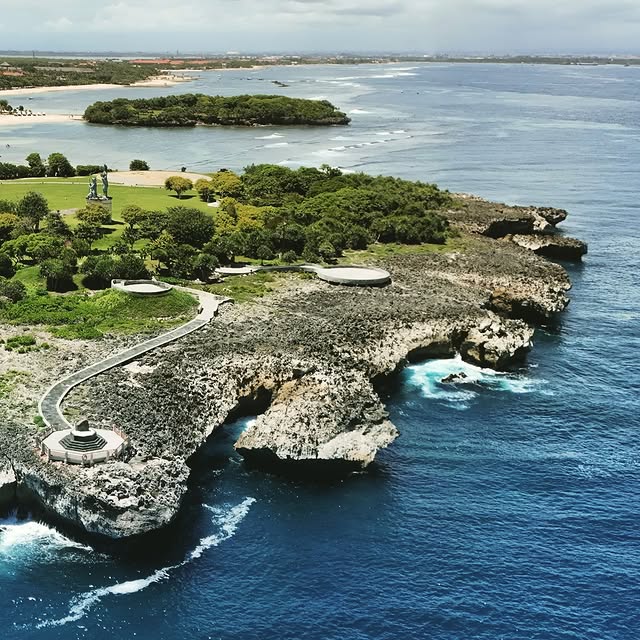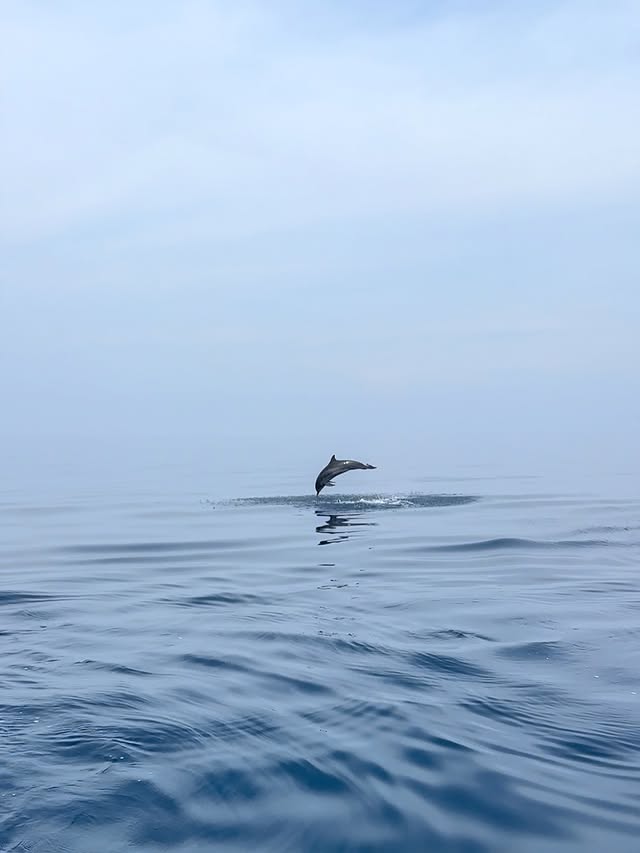Bali, the famous Indonesian island, is a popular travel destination year-round. However, Bali’s temperature and weather are essential factors to consider when planning your Bali itinerary. Find out the best time to visit Bali, as it has a tropical climate characterised by high temperatures and humidity throughout the year.
Located near the equator, approximately 8 degrees south, Bali experiences consistent weather conditions. Despite this consistency, the island’s diverse geography, with its coastal regions, mountainous areas, and green atmosphere, can influence local microclimates.
The variation ensures that Bali offers a comfortable environment for visitors no matter the time of year. Whether exploring Bali’s best beaches, temples, or jungles, its pleasant tropical temperatures enhance the experience.
In this guide, we will explain the key climate factors that influence Bali’s weather, along with the most important statistics related to it. It will help you explore the best places in Bali, taking the weather into consideration. So, let’s get started!
Bali Temperature Chart
| Month | Max/Min °C | Rainfall (mm) |
| Jan | 30° / 24°c | 350 |
| Feb | 28° / 24°c | 244 |
| Mar | 28° / 24°c | 210 |
| Apr | 27° / 24°c | 131 |
| May | 27° / 24°c | 74 |
| Jun | 26° / 24°c | 57 |
| July | 25° / 23°c | 53 |
| Aug | 25° / 22°c | 42 |
| Sep | 26° / 23°c | 53 |
| Oct | 26° / 23°c | 68 |
| Nov | 27° / 24°c | 154 |
| Dec | 27° / 24°c | 300 |
From the above Bali’s weather calendar, it is clear that the temperature in Bali remains relatively consistent throughout the year, ranging between 24°C (min) and 30°C (max). The island experiences its warmest months with temperatures around 28°C-30°C, and it cools slightly from June to August, with average temperatures of 25°C-26°C.
Rainfall is highest in the wet season (typically November to March), with January being the wettest month at 350mm. The dry season from April to October sees significantly less rainfall, particularly from June to August, where rainfall drops to around 50-70mm. April and May mark the transition to drier conditions, with 131mm and 74mm of rainfall, respectively.
Overall, Bali’s climate is tropical, with a clear wet and dry season. But it remains warm and humid year-round. So, why wait? Plan your Bali itinerary today.
Bali Temperature During Different Seasons
According to the international climatologists at the Bureau of Meteorology (BOM), Bali has two distinct seasons: a Wet Season and a Dry Season. The Wet Season in Bali lasts from November to April, and the Dry Season lasts from May to October. To understand the Bali temperature, it is important to remember two phases: El Niño La Niña.
- El Niño – this weather pattern that causes prolonged hot and dry weather. It causes the warming of the oceans and causes temperatures to rise.
- La Niña – this weather pattern causes longer and wetter rainy seasons, cooler ocean temperatures in the Pacific Ocean, and higher rainfall in the region as a result.
As of December 2024, Bali is experiencing a La Niña phase. This means the sea surface temperatures in the central and eastern Pacific Oceans are cooler than usual. As a result, the weather in Bali may have more rainfall than a typical year.
Wet Season
The wet season in Bali typically occurs from November to April, a period often referred to as the “rainy season” or “monsoon season.”
During this time, the climate is characterised by high temperatures and humidity, with daily temperatures ranging between 22°C and 30°C. On average, the island receives between 234 mm and 287 mm of rainfall each month, making it a significant time for the region’s tropical flora.

Rainfall can vary during this season. It might be a light drizzle, occasional showers, or heavy downpours. January is usually the wettest month, making the landscape turn lush and green🌲.
This season presents an ideal opportunity for visitors to immerse themselves in Bali’s natural beauty, explore its enchanting jungles and terraced rice fields, and take advantage of the cooler, refreshing rain.
Additionally, the wet season is a wonderful time to indulge in local wellness practices, such as rejuvenating spa treatments. Those looking to deepen their practice can also participate in yoga retreats, taking full advantage of the serene and tranquil atmosphere that the rains often bring.
Cultural experiences abound as well, with numerous museums, temples, and energetic markets that welcome visitors year-round. Overall, the wet season offers a unique perspective on Bali, showcasing its natural splendour and rich cultural heritage.
Dry Season
Due to its strategic location within the tropics, Bali enjoys a distinct dry season that occurs between May and October. During this period, temperatures remain comfortably warm, averaging between 20 and 31°C (68 to 88°F)🌡️, which provides a pleasant climate for outdoor exploration.

Rainfall is notably light, averaging only 57 to 85 mm per month, allowing visitors to bask in ample sunshine ️ and minimal disturbances from rain. Furthermore, humidity levels drop slightly during the dry season, enhancing the overall comfort and making it feel cooler compared to the more humid wet season.
The combination of mild temperatures and reduced humidity creates an inviting atmosphere for various outdoor activities. If you are an adventure lover, then the dry season is the best time to explore the colourful underwater world by snorkelling or scuba diving. You’ll find beautiful coral reefs full of marine life.
Cultural enthusiasts can enjoy sightseeing by exploring the island’s beautiful temples, green rice terraces, and quaint villages. Hiking lovers can trek through the island’s stunning landscapes. They can follow trails that lead to the famous Mount Batur, where they will see breathtaking views of the sunrise.
This prime season is ideal for engaging in a range of adventures, such as lounging on Bali’s lovely beaches with their soft, white sand and crystal-clear waters. Overall, Bali’s dry season presents an ideal setting for unforgettable experiences amidst its natural beauty.
Bali Weather and Climate in Different Zones
Bali is a diverse island that offers a lot to tourists. The coastal areas, like Kuta, Seminyak, and Canggu, are lively. They have warm weather, great beaches for surfing, and a vibrant nightlife.
Central Bali, which includes Ubud and Kintamani, is cooler. This area features lush rice terraces, forests, and cultural attractions.
The mountains and volcanoes (such as Mount Agung and Mount Batur) offer cooler temperatures and adventure activities like hiking.
If you want something quieter and less crowded, the Nusa Islands and Bukit Peninsula are perfect- beautiful cliffs and secluded beaches.
North Bali (including Lovina) also offers a peaceful atmosphere that is perfect for dolphin-watching and relaxing.
Each zone caters to different interests, making Bali an adaptable destination. So, let’s know about each zone in detail.
Coastal Areas (South and West Bali)
Kuta, Seminyak, Sanur, Canggu, and Candidasa are the southern parts of Bali. It is considered the best place to stay in Bali. These are the coastal regions which have warm temperatures and plenty of sunshine and are perfect for beach lovers and water sports enthusiasts.
During the dry season (April to October), these regions remain sunny and breezy. With less rainfall and pleasant conditions, it is ideal for beach activities and water sports.
However, during the wet season (November to March), it receives occasional heavy rain, especially in January and February. Rainstorms are intense but brief, and sunshine often returns quickly.
| Temperature: 27°C – 32°C (81°F – 90°F)
Humidity: Generally humid year-round, with lower humidity during the dry season. |
Central Bali
Ubud, Sidemen, Kintamani, Bedugul, and Batukaru come under Bali’s central region. This area is situated at higher altitudes with a mild climate, greenery, rice terraces, coffee plantations, and tropical forests. It is filled with nature and cultural richness.
During the dry season (April to October), it has mild temperatures with occasional showers, particularly at higher altitudes (e.g., Bedugul, Kintamani). And mornings are misty.
But during the wet season (November to March), rain is more frequent, particularly in lush areas like Sidemen and Ubud. Ideal for nature lovers and those seeking rice terraces, coffee plantations, and tropical forests. So, experience the best things to do in Ubud and enjoy its beautiful weather.
| Temperature: 20°C – 27°C (68°F – 81°F)
Humidity: Cooler and more humid than coastal regions. |
Mountains and Volcanos (North and East Bali)
Bali’s volcanic areas, like Mount Agung, Mount Batur, and Kintamani, have cooler temperatures and dramatic landscapes. The weather is cooler than the coastal areas, and rain is common, especially at higher elevations. These regions are perfect for adventurous travellers, especially those interested in hiking or volcano treks.

During the dry Season (April to October), it has clearer skies for trekking and exploring volcanoes, but it is still cool, particularly at night.
During the wet season (November to March), heavy rain is common at higher altitudes, which makes trekking conditions slippery. Mist and fog are common, especially near volcanoes.
| Temperature: Typically cooler, ranging from 18°C (64°F) at night to around 28°C (82°F) during the day.
Humidity: Generally lower than in coastal areas but humid in tropical forest areas. |
The Nusa Islands & Bukit Peninsula
The Bukit Peninsula and the Nusa Islands (Nusa Lembongan, Nusa Ceningan, and Nusa Penida) are located at the southern tip of Bali. It has a drier, more rough landscape. With cliffs, dry forests, and beautiful coastal views, these areas are perfect for tourists who are seeking a quieter, more secluded experience.

The dry season (April to October) is extended here, with lower humidity and less rainfall, although water shortages can be an issue during the dry months.
The wet season (November to March) gets less rainfall than other regions, but still a possibility of rain. The dry climate continues throughout the wet months.
| Temperature: 28°C – 32°C (82°F – 90°F)
Humidity: Lower humidity and drier than other parts of Bali. |
North Bali (Lovina, Singaraja)
North Bali, including areas like Lovina and Singaraja, which offers a relaxed atmosphere with black sand beaches and calm waters. This area is less touristy compared to the south and offers opportunities for dolphin watching, diving, and exploring traditional Balinese culture.

The climate is more moderate with less rainfall than the southern regions, making it a peaceful alternative for tourists looking to escape the crowds.
In the dry season (April to October), you find sunny days ideal for activities like dolphin watching and diving. Less frequent rainfall than in southern Bali.
The wet season (November to March) gets occasional rain, but the north typically receives less precipitation than other areas, with a mild and comfortable atmosphere.
| Temperature: 25°C – 30°C (77°F – 86°F)
Humidity: Moderate humidity, but generally drier than the southern coastal regions. |
Conclusion
Bali has a warm tropical climate. Temperatures in Bali stay between 20°C and 32°C (68°F to 91°F) all year. The island has two main seasons: the rainy season, which lasts from November to April, has high humidity and frequent rain. The dry season runs from May to October and brings sunnier, more pleasant weather.
For a better understanding, check out the table mentioned below
| Zone & Regions | Temperature Range (Avg) | Temperature | Characteristics |
| Coastal Areas (South & West Bali) | Sanur, Kuta, Seminyak, Canggu, Padangbai, Candidasa | 27°C – 32°C (81°F – 90°F) | Warm, humid, dry season sunny, wet season with rain showers. |
| Central Bali & Highlands | Ubud, Sidemen, Kintamani, Bedugul, Batukaru | 20°C – 27°C (68°F – 81°F) | Cooler, more humid, more rain, lush landscapes. |
| Mountains & Volcanos | Mount Agung, Mount Batur, Bedugul, Kintamani | 18°C – 28°C (64°F – 82°F) | Cooler, foggy mornings, frequent rain, ideal for trekking. |
| Nusa Islands & Bukit Peninsula | Nusa Lembongan, Nusa Ceningan, Nusa Penida, Bukit Peninsula | 28°C – 32°C (82°F – 90°F) | Drier, warm, water shortages in the dry season, environmental concerns. |
| North Bali | Lovina, Singaraja | 25°C – 30°C (77°F – 86°F) | Moderate humidity, drier, less rainfall in the wet season. |
This table sums up Bali’s temperature, which will help you choose the best time to visit and the best places to stay in Bali.
Bali’s weather is perfect for relaxing in the sun on its exquisite beaches, exploring the best places, and experiencing the best to-do things. So, why wait? Plan your vacation, contact Dimaak Tours and get your customised Bali itinerary at an affordable price.
Frequently Asked Questions on Bali Temperature
What is the temperature in Bali in June?
In June, Bali typically experiences temperatures between 25°C (min) and 27°C (max). It’s part of the dry season, so expect pleasant weather with mild temperatures.
What is the temperature in Bali in December?
December in Bali is part of the wet season, with temperatures ranging from 27°C (min) to 30°C (max). It’s warm and humid, with occasional heavy rain.
What is the temperature in Bali in May?
In May, Bali sees temperatures around 26°C (min) to 28°C (max). The weather is warm and starting to transition into the dry season, so rainfall is low.
What is the temperature in Bali in July?
July is a peak month for Bali’s dry season, with temperatures ranging from 25°C (min) to 27°C (max). Expect pleasant, sunny weather and cooler evenings.
What is the temperature in Bali in August?
In August, temperatures in Bali range from 25°C (min) to 27°C (max). The island is typically dry, with mild temperatures and low humidity, making it perfect for outdoor activities.
What is the temperature in Bali in November?
November marks the beginning of the wet season, with temperatures ranging between 26°C (min) and 28°C (max). Rainfall increases, but there’s still plenty of sunshine.
What is the temperature in Bali in January?
In January, Bali is quite warm, with temperatures ranging from 27°C (min) to 30°C (max). It’s the wettest month, with heavy rain showers and high humidity.
What is the temperature in Bali in February?
February in Bali experiences temperatures between 28°C (min) and 30°C (max). It’s still part of the wet season, with frequent rain showers and high humidity.
What is the temperature in Bali in September?
September in Bali sees temperatures ranging from 26°C (min) to 28°C (max). It’s the end of the dry season, with sunny days and pleasant weather.
What is the temperature in Bali in October?
October in Bali has temperatures between 27°C (min) and 29°C (max). It’s a transition month, with reduced rainfall and mild weather as the island heads toward the rainy season.
What is the temperature in Bali in April?
In April, Bali experiences temperatures between 26°C (min) and 29°C (max). The weather is warm and sunny, with occasional light rain, as the dry season begins.
What is the temperature in Bali in March?
In March, Bali’s temperature ranges from 27°C (min) to 30°C (max). It’s still part of the wet season, with higher humidity and frequent rain showers.
What is the general temperature in Bali, Indonesia?
Overall, Bali’s temperature stays between 24°C to 30°C year-round, making it a warm tropical destination. Expect higher humidity during the wet season (November to March) and mild, dry weather from April to October.
What is the temperature in Kuta, Bali?
Kuta, Bali has a similar temperature to the rest of the island, typically ranging between 26°C (min) and 30°C (max). It’s warm and humid year-round, with the best weather in the dry season (April to October).